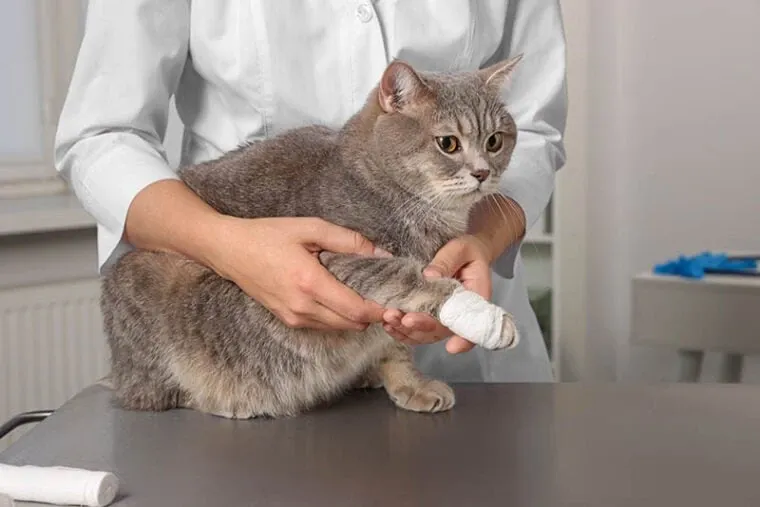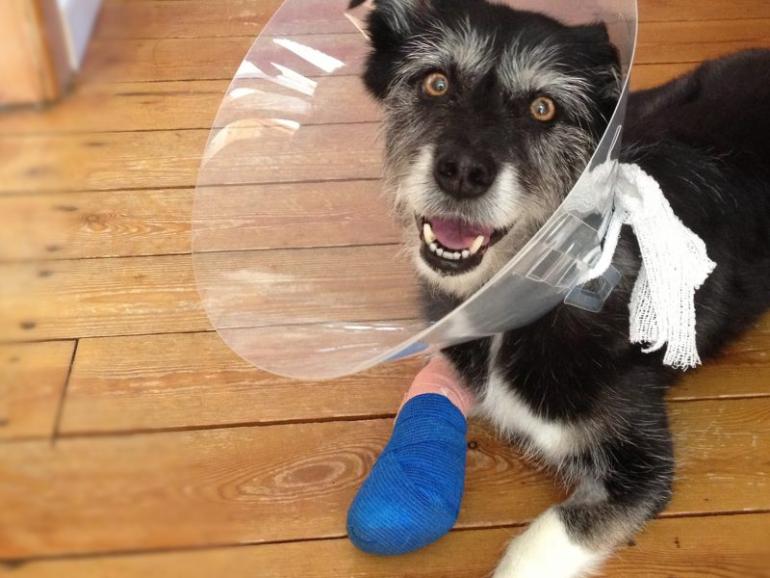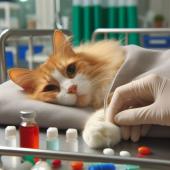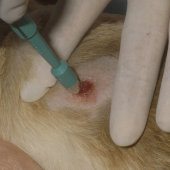Caring for Bandages in Cats and Dogs: A Comprehensive Guide

Bandages - how to care for them
*PLEASE CHECK THE BANDAGE THOROUGHLY AT LEAST TWICE A DAY*
Please take great heed of this advise, and don't hesitate to seek guidance from a veterinary nurse at your local veterinarian clinic if you have any questions. If bandages are left in place when an issue arises, they could result in serious harm.

Can my pet still exercise?
Please limit your dog's exercise to extremely brief walks on a leash. If at all feasible, cats should be kept indoors and in a single room.

How can the bandage be protected?
Please use a sturdy plastic bag to cover the bandage while bringing your pet outside. When you get back inside, take the bag out right away. Plastic prevents the bandage from "breathing," therefore if it is used for an extended period of time, issues will arise. There are waterproof/breathable boots and covers available (like Pawz and Medipaw, which can be purchased online); these are especially advised if your pet will require continuous bandaging.
What problems can occur?
Problems can occur relatively easily owing to the nature and lifestyle of our pets, they also cannot tell us verbally if there is a problem! Please contact the practice immediately if any of the following should occur:
- The bandage becomes wet or soiled.
- The bandage slips.
- The bandage seems tight.
- The bandage smells unpleasant.
- Toes are visibly swollen or cold to the touch.
- Your pet is excessively licking or chewing the bandage.

TIPS
1. Keep It Dry and Clean:
-
Avoid Moisture: Moisture under the bandage can lead to infections. Keep the bandage dry, especially during baths or walks in rainy weather.
-
Cover the Bandage During Baths: Use a plastic bag or a waterproof cover to protect the bandage during baths. Make sure the cover is secure to prevent water from seeping in.
2. Regular Inspection:
-
Check for Signs of Infection: Regularly inspect the bandage and the area around it for signs of infection such as redness, swelling, or discharge. If you notice any abnormalities, contact your veterinarian immediately.
-
Monitor Bandage Integrity: Ensure the bandage remains secure and in good condition. If it becomes loose, torn, or dirty, consult your vet for re-bandaging.
3. Prevent Chewing and Scratching:
-
Use an Elizabethan Collar (E-collar): Cats and dogs tend to lick, chew, or scratch at bandages. To prevent this, use an E-collar to keep them from accessing the bandaged area.
-
Deterrent Sprays: Some pet-friendly sprays are available that discourage pets from chewing or licking their bandages. Consult your vet for recommendations.
4. Bandage Changes and Veterinary Visits:
-
Follow Veterinarian's Instructions: Adhere to the schedule provided by your vet for bandage changes and follow-up appointments.
-
Professional Expertise: Allow a veterinarian or trained veterinary technician to change the bandages. Proper techniques are crucial to prevent complications.
5. Provide Comfort:
-
Pain Management: If your pet seems uncomfortable, consult your vet about appropriate pain management medications.
-
Comfortable Environment: Create a quiet, comfortable space for your pet to rest. Limit their activity to prevent strain on the bandaged area.
6. Nutrition and Hydration:
-
Balanced Diet: Ensure your pet is on a balanced diet rich in nutrients, promoting faster healing.
-
Adequate Hydration: Provide fresh water to keep your pet well-hydrated, supporting the healing process.
7. Observe Behavioral Changes:
- Behavioral Changes: Monitor your pet's behavior. If you notice signs of distress, discomfort, or changes in appetite, inform your veterinarian promptly.
What else should I look out for?
Your pet may seem generally unwell, eg lethargic, off food or restless. Your pet may also show signs of pain or discomfort such as suddenly not using the bandaged limb.
Please call the practice immediately if you notice any of the above or if you are concerned that something is just not right. Bandages need to be changed regularly so please ensure that you know when your pet's bandage is due to be changed and make appointments as advised.
Conclusion
Proper care for bandages in cats and dogs is crucial for their recovery. By following these guidelines and staying vigilant about any changes in your pet's condition, you can contribute significantly to their healing process. Always consult your veterinarian if you have concerns or questions about your pet's bandages or overall health, ensuring they receive the best possible care and support during their recovery.



